
William Harrison "Jack" Dempsey, nicknamed Kid Blackie and The Manassa Mauler, was an American professional boxer who competed from 1914 to 1927, and reigned as the world heavyweight champion from 1919 to 1926. A cultural icon of the 1920s, Dempsey's aggressive fighting style and exceptional punching power made him one of the most popular boxers in history. Many of his fights set financial and attendance records, including the first million-dollar gate. He pioneered the live broadcast of sporting events in general, and boxing matches in particular.
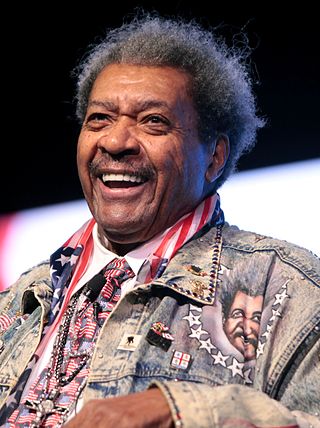
Donald King is an American boxing promoter, known for his involvement in several historic boxing matchups.
The following is an overview of the events of 1896 in film, including a list of films released and notable births.

Dennis Waterman was an English actor and singer. He was best known for his tough-guy leading roles in television series including The Sweeney, Minder and New Tricks, singing the theme tunes of the latter two.

Birt Acres was an American and British photographer and film pioneer. Among his contributions to the early film industry are the first working 35 mm camera in Britain (Wales), and Birtac, the first daylight loading home movie camera and projector. He also directed a number of early silent films.
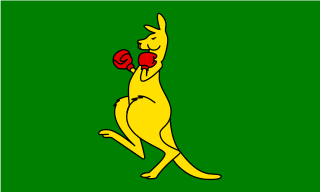
The boxing kangaroo is a national symbol of Australia, frequently seen in pop culture. The symbol is often displayed prominently by Australian spectators at sporting events, such as at cricket, tennis, basketball and football matches, and at the Commonwealth and Olympic Games. The flag is also highly associated with its namesake national rugby league team – the Kangaroos. A distinctive flag featuring the symbol has since been considered Australia's sporting flag.

James Driscoll, commonly known as Peerless Jim, was a Welsh boxer who learned his trade in the boxing ring and used it to fight his way out of poverty. Driscoll was British featherweight champion and won the coveted Lonsdale belt in 1910. He is a member of the Welsh Sports Hall of Fame, the Ring Magazine Hall of Fame, and the International Boxing Hall of Fame.

Actuality film is a non-fiction film genre that uses footage of real events, places, and things, a predecessor to documentary film. Unlike documentaries, actuality films are not structured into a larger narrative or coherent whole. During the era of early cinema, actualities—usually lasting no more than a minute or two and usually assembled together into a program by an exhibitor—were just as popular and prominent as their fictional counterparts. The line between "fact" and "fiction" was not as prominent in early cinema as it would become once documentaries became the predominant non-fiction filmmaking form. Actuality as a film genre is related to still photography.

Reginald Leslie "Snowy" Baker was an Australian athlete, sports promoter, and actor. Born in Surry Hills, an inner-city suburb of Sydney, New South Wales, Baker excelled at a number of sports, winning New South Wales swimming and boxing championships while still a teenager. Playing rugby union for Eastern Suburbs, he played several games for New South Wales against Queensland, and in 1904 represented Australia in two Test matches against Great Britain. At the 1908 London Olympics, Baker represented Australasia in swimming and diving, as well as taking part in the middleweight boxing event, in which he won a silver medal. He also excelled in horsemanship, water polo, running, rowing and cricket. However, "His stature as an athlete depends largely upon the enormous range rather than the outstanding excellence of his activities; it was as an entrepreneur-showman, publicist and businessman that he seems in retrospect to have been most important."

The cinema of Wales comprises the art of film and creative movies made in Wales or by Welsh filmmakers either locally or abroad. Welsh cinema began in the late-19th century, led by Welsh-based director William Haggar. Wales continued to produce film of varying quality throughout the 20th century, in both the Welsh and English languages, though indigenous production was curtailed through a lack of infrastructure and finance, which prevented the growth of the industry nationally. Despite this, Wales has been represented in all fields of the film making process, producing actors and directors of note.
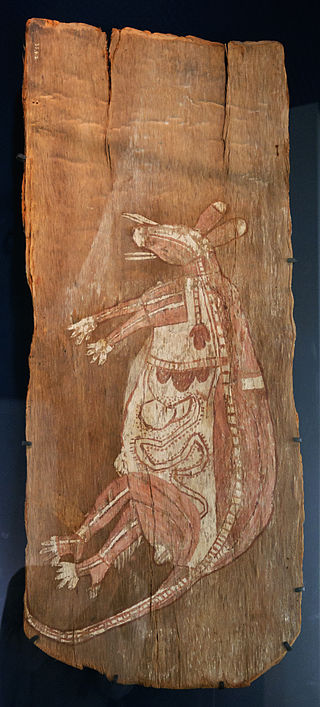
Kangaroos, Wallabies and other Macropodidae have become emblems and symbols of Australia, as well as appearing in popular culture both internationally and within Australia itself.

Boxing Kangaroo is an 1895 German short black-and-white silent documentary film, directed and produced by Max Skladanowsky, which features a kangaroo boxing against a man against a white background at the Circus Busch. The film, which premiered at the first public projection of motion pictures in Germany on 1 November 1895, was filmed on 35 mm film and is 18 feet in length.
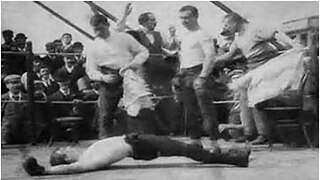
Boxing Match; or, Glove Contest is an 1896 British short black-and-white silent documentary film, produced and directed by Birt Acres for exhibition on Robert W. Paul's peep show Kinetoscopes, featuring a staged boxing match between Sergeant-Instructor Barrett and Sergeant Pope with a round, an interval and a knockout. The film was considered lost until footage from an 1896 Fairground Programme, originally shown in a portable booth at Hull Fair by Midlands photographer George Williams, donated to the National Fairground Archive was identified as being from this film.
Boxing is a popular sport in Wales, and since the early 20th century Wales has produced a notable number of professional boxers including several World Champions. The most notable boxers include Wales' first World Champion Percy Jones; Jimmy Wilde, who is seen as pound-for-pound one of the World's finest boxers and Joe Calzaghe, who ended his career an undefeated World Champion.

The Corbett–Fitzsimmons Fight is an 1897 documentary film directed by Enoch J. Rector depicting the 1897 boxing match between James J. Corbett and Bob Fitzsimmons in Carson City, Nevada on St. Patrick's Day. Originally running for more than 100 minutes, it was the longest film released to date; as such, it was the world's first feature film.

The Arrest of a Pickpocket is an 1895 British short black-and-white silent crime film, produced and directed by Birt Acres for exhibition on Robert W. Paul's peep show Kinetoscopes, featuring a policeman catching a pickpocket with the assistance of a passing sailor. The film was considered lost until footage from an 1896 Fairground Programme, originally shown in a portable booth at Hull Fair by Midlands photographer George Williams, donated to the National Fairground Archive was identified as being from this film.

Performing Animals; or, Skipping Dogs is an 1895 British short black-and-white silent documentary film, produced and directed by Birt Acres for exhibition on Robert W. Paul's peep show Kinetoscopes, featuring one dog jumping through hoops and another dancing in a costume. The film was considered lost until footage from an 1896 Fairground Programme, originally shown in a portable booth at Hull Fair by Midlands photographer George Williams, donated to the National Fairground Archive was identified as being from this film.
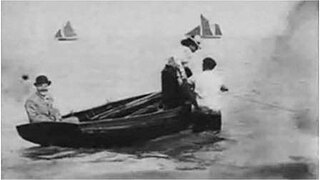
Landing at Low Tide is an 1896 British short black-and-white silent comedy film, produced and directed by Birt Acres for exhibition on Robert W. Paul's peep show Kinetoscopes, featuring a lady falling into the water as she is helped from a small boat. The film was considered lost until footage from an 1896 Fairground Programme, originally shown in a portable booth at Hull Fair by Midlands photographer George Williams, donated to the National Fairground Archive was identified as being from this film.
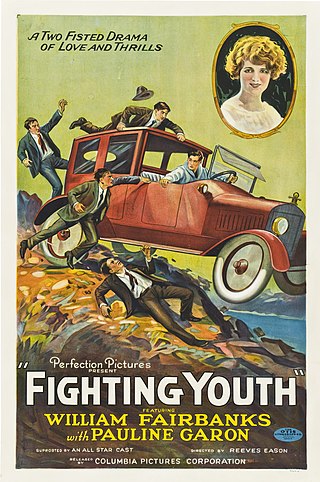
Fighting Youth is a lost 1925 American silent action film directed by B. Reeves Eason and starring William Fairbanks, Pauline Garon and George Periolat. A notorious brawler promises his fiancée that he will give up fighting, but then is persuaded to take party in a charity boxing match.

The Battling Kangaroo is an American two reel, slap stick silent comedy film directed by Jules White in 1926. Fox Film Corporation produced and distributed the film. Fox Film released it in the United States on December 5, 1926.


















